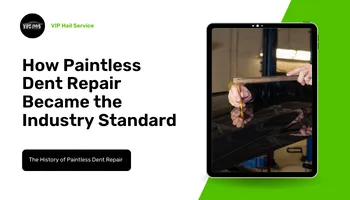A Guide for Architectural Service
Navigating Virginia’s Building Codes: What You Need to Know
Understanding building codes is essential for anyone planning a construction project in Virginia. These codes ensure that buildings are safe, energy-efficient, and suited to the region's environment. Whether you’re building a new home, renovating an existing space, or managing a commercial project, navigating these regulations can feel overwhelming. Don’t worry—this guide will break down the key things you need to know about Virginia’s building codes, with a special focus on Southwest Virginia.

What Are Building Codes?
Building codes are rules set by state and local governments that dictate how buildings should be constructed, maintained, or modified. These rules cover everything from structural integrity to fire safety, electrical systems, plumbing, and energy efficiency. The Virginia Department of Housing and Community Development (DHCD) oversees the development and enforcement of building codes statewide. However, local building departments in cities, towns, and counties are responsible for day-to-day enforcement. These offices handle inspections, permits, and certifications.
In Virginia, the Virginia Uniform Statewide Building Code (USBC) serves as the baseline. It’s enforced across the state, but local jurisdictions may have specific requirements, especially in cities like Roanoke or surrounding counties.
Why Building Codes Matter
1. Safety Comes First
Building codes ensure that your home or business can withstand natural disasters like strong winds or heavy snowfall, both of which are common in Virginia’s mountainous regions.
2. Energy Efficiency
Modern codes require better insulation and energy-efficient windows, which can help reduce energy bills.
3. Property Value
Following building codes can make your property more appealing to buyers and prevent costly repairs or fines later.
Key Aspects of Virginia’s Building Codes

Permits Are Essential
Before starting most construction projects, you’ll need a permit. This includes:
• Building permits for new structures or major renovations.
• Electrical, plumbing, or mechanical permits for system upgrades.
Always check with your local building office. For example, Roanoke may have specific rules about historic properties.

Inspections Are Required
Throughout your project, inspections ensure the work complies with the approved plans and building codes. These include:
• Foundation inspections
• Framing inspections
• Final inspections for occupancy approval

Energy Efficiency Standards
Virginia’s codes require energy-efficient designs, including:
• Adequate insulation based on climate zone (Southwest Virginia is Zone 4).
• High-efficiency HVAC systems.
•Energy-efficient lighting.

Accessibility
New commercial buildings and multifamily homes must comply with the Americans with Disabilities Act (ADA) standards, ensuring accessibility for everyone. This primarily includes wheelchair ramps at the entrance and emergency exit(s).
Key Aspects of Virginia’s Building Codes
1. Weather and Terrain
The Appalachian region has its own challenges, including:
• Sloping lots that may need special foundation designs.
• Snow loads that affect roof construction.
• Drainage issues due to heavy rainfall.
2. Historic Districts
If you’re renovating a historic property, you may need to follow additional guidelines to preserve the building’s character. Cities like Roanoke often have local preservation boards.
3. Seismic Activity
While rare, Southwest Virginia is in a low seismic activity zone. Builders should ensure proper structural reinforcement, especially for larger projects.
Steps to Follow for Code Compliance
1. Plan Ahead
Before you begin, consult with a licensed architect or contractor (like TAS Design) who understands Virginia’s building codes. We’ll help you create designs that meet local requirements.
2. Obtain Necessary Permits
Visit your local building office or their website to apply for the correct permits. Be prepared to submit plans and pay fees. (Or let us handle the applications for you)
3. Schedule Inspections
Once construction begins, inspections ensure everything is up to code. Stay on schedule to avoid delays.
4. Work With Professionals
Hiring experienced contractors ( Like TAS Design) and tradespeople ensures that your project will meet all legal and safety standards.
FAQ
1. Do I need a permit for small projects like a deck or shed?
Yes, most outdoor structures, including decks and sheds, require permits if they exceed certain sizes. Check with your local building office for specifics.
2. Can I appeal a code decision?
If you disagree with a code interpretation, you can appeal to the local Board of Building Code Appeals (BBCA).
3. How much do building permits cost?
Permit costs vary by location and project type. In Roanoke, they range from a few hundred to several thousand dollars.
4. What happens if I build without a permit?
You may face fines, and the work may need to be torn down or redone to meet codes.
More Articles From TAS Design



Contact Us
Service Hours
Mon- Fri 8 am - 5 pm
Sat, Sun- Closed except by appointment





Contact Us
1 540-302-2593
2507 Bluff Road
Roanoke VA 24014
Service Hours
Mon- Fri 8 am - 5 pm
Sat, Sun- Closed except by appointment
Connect





